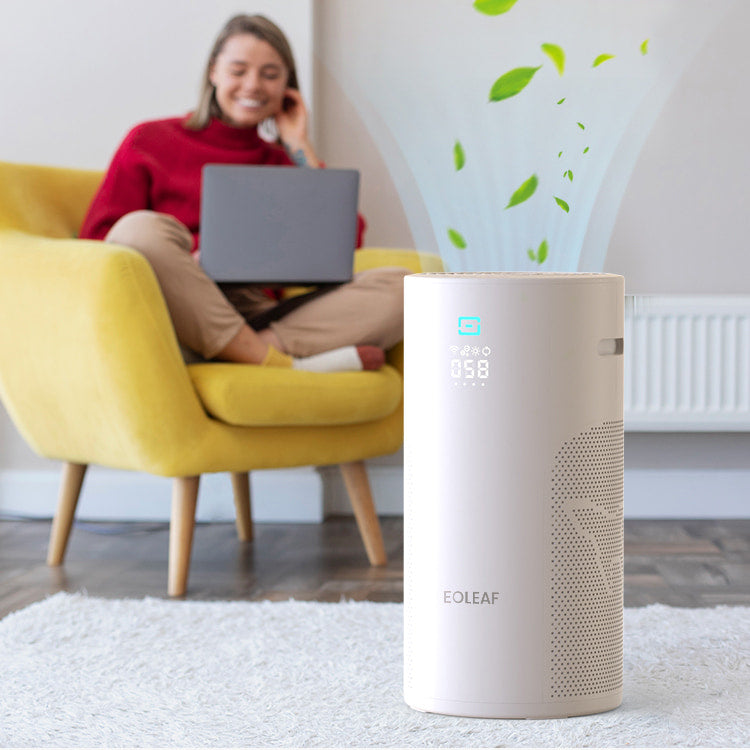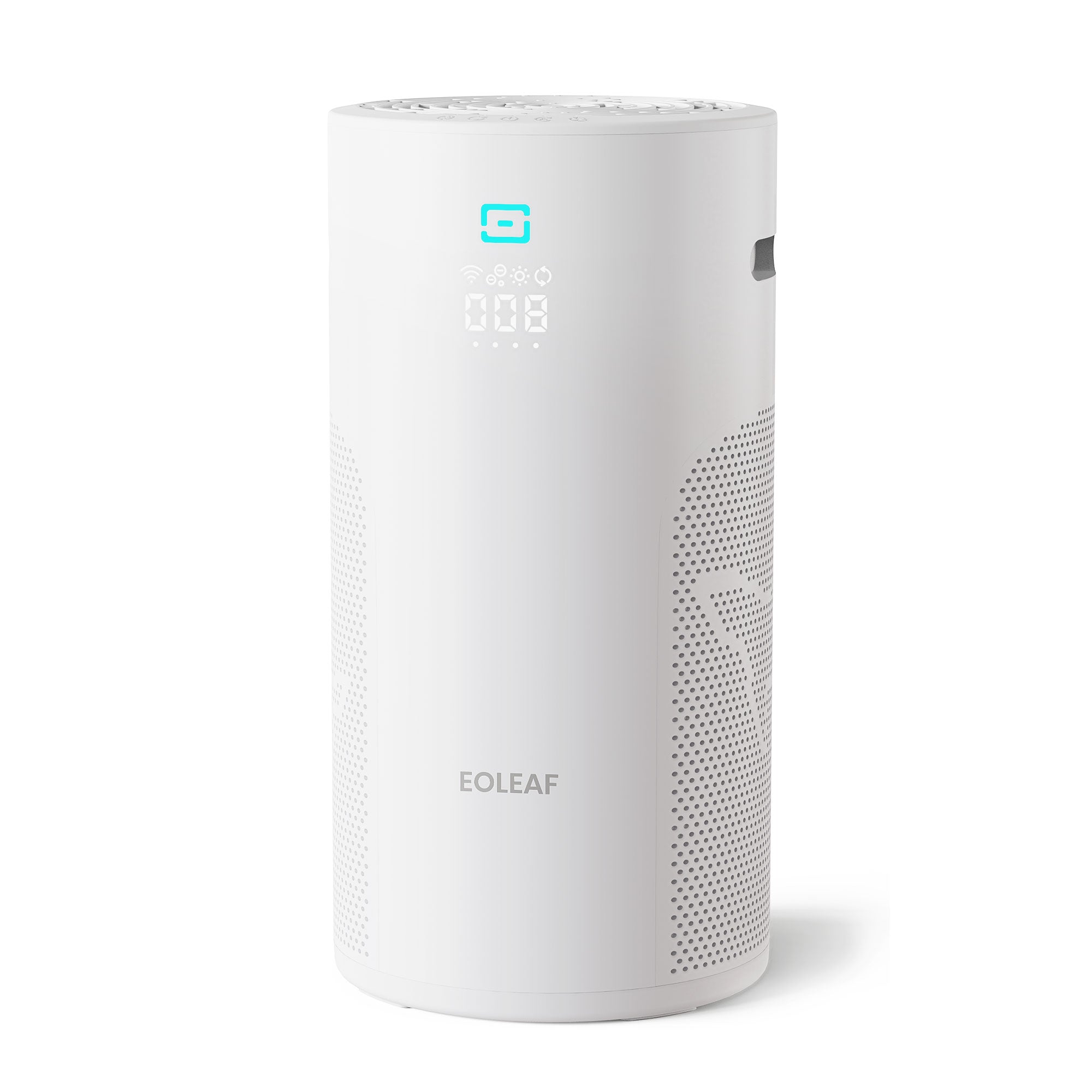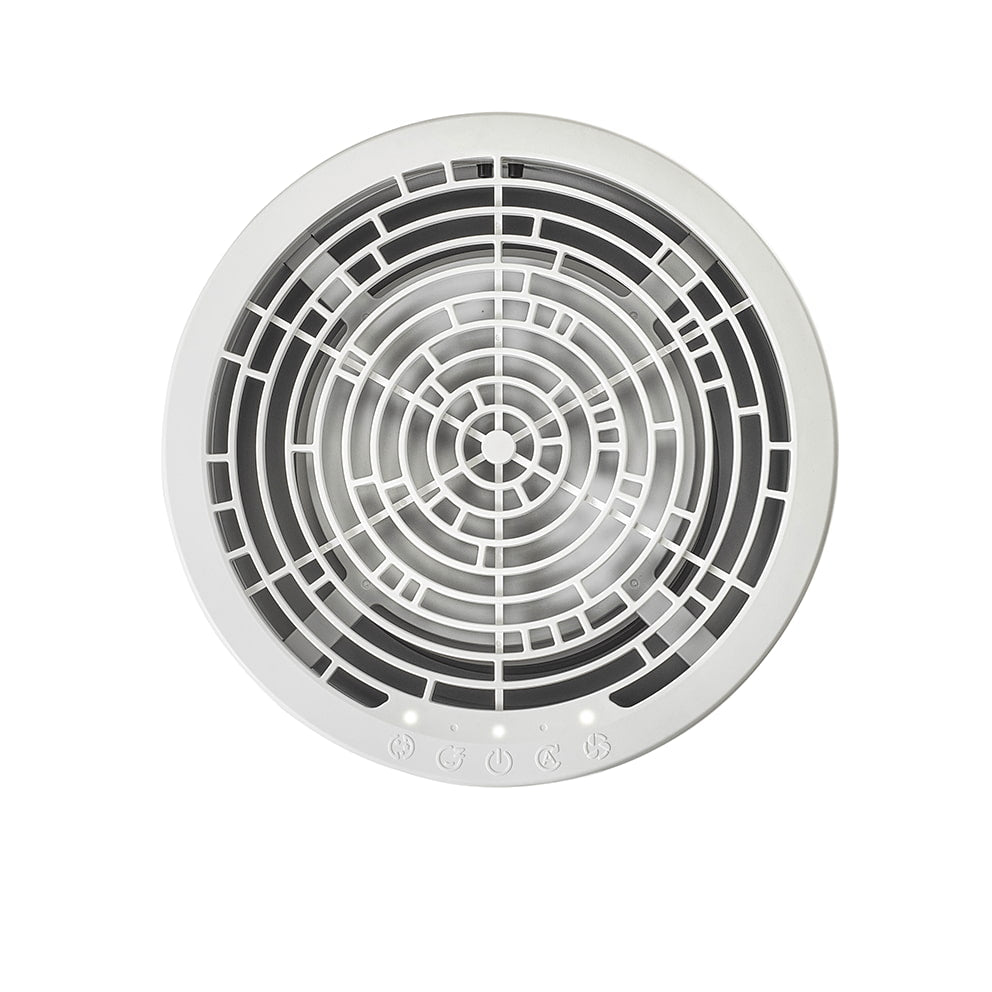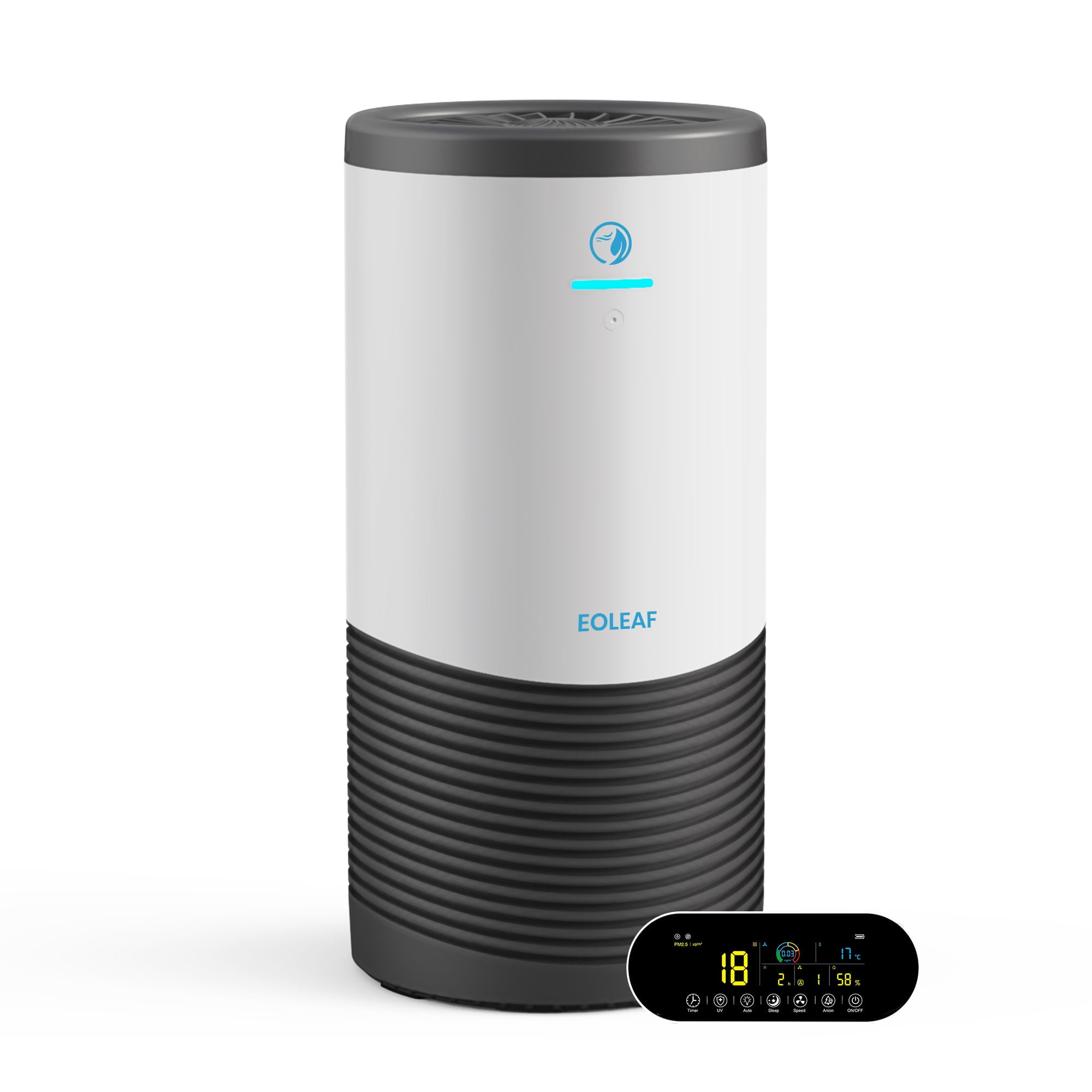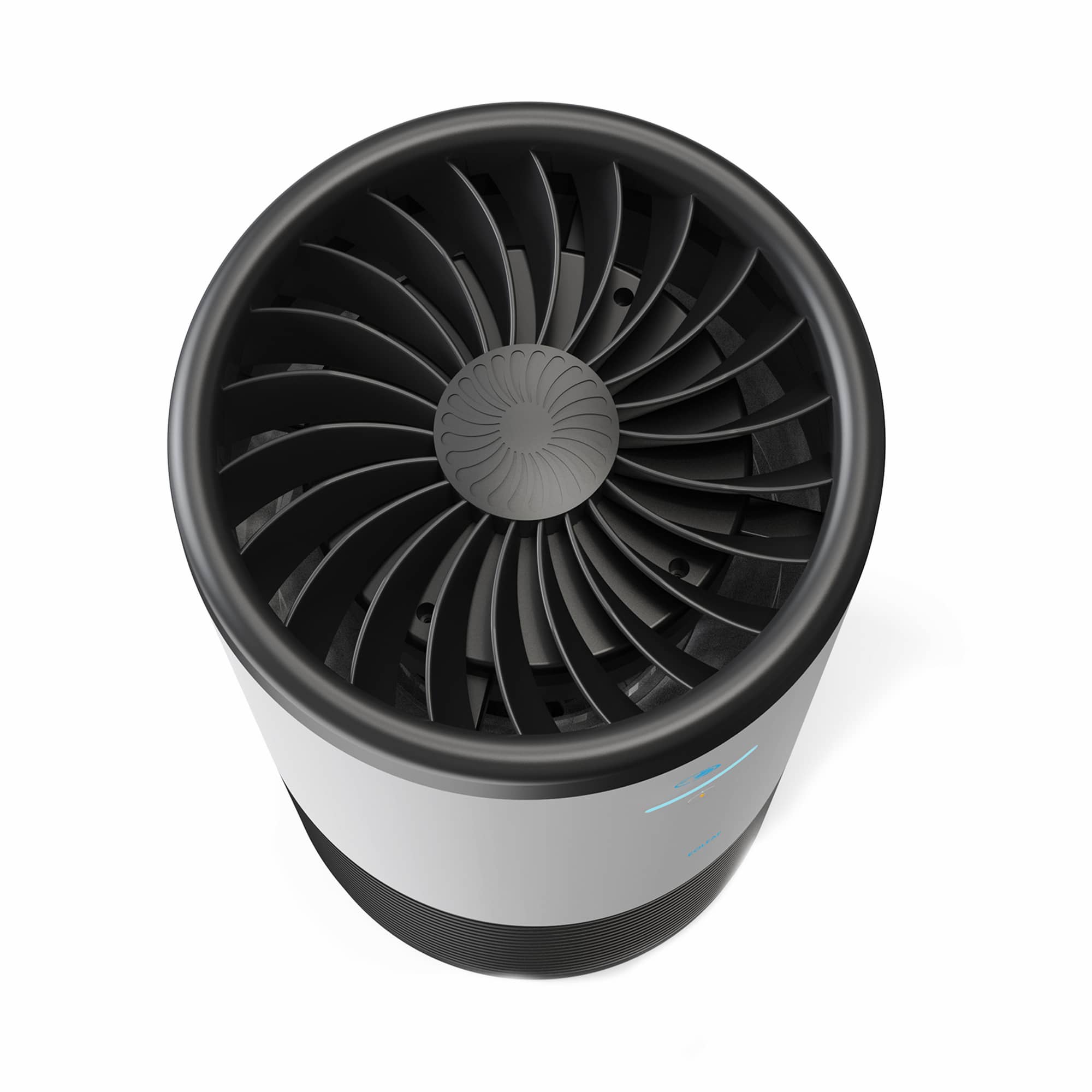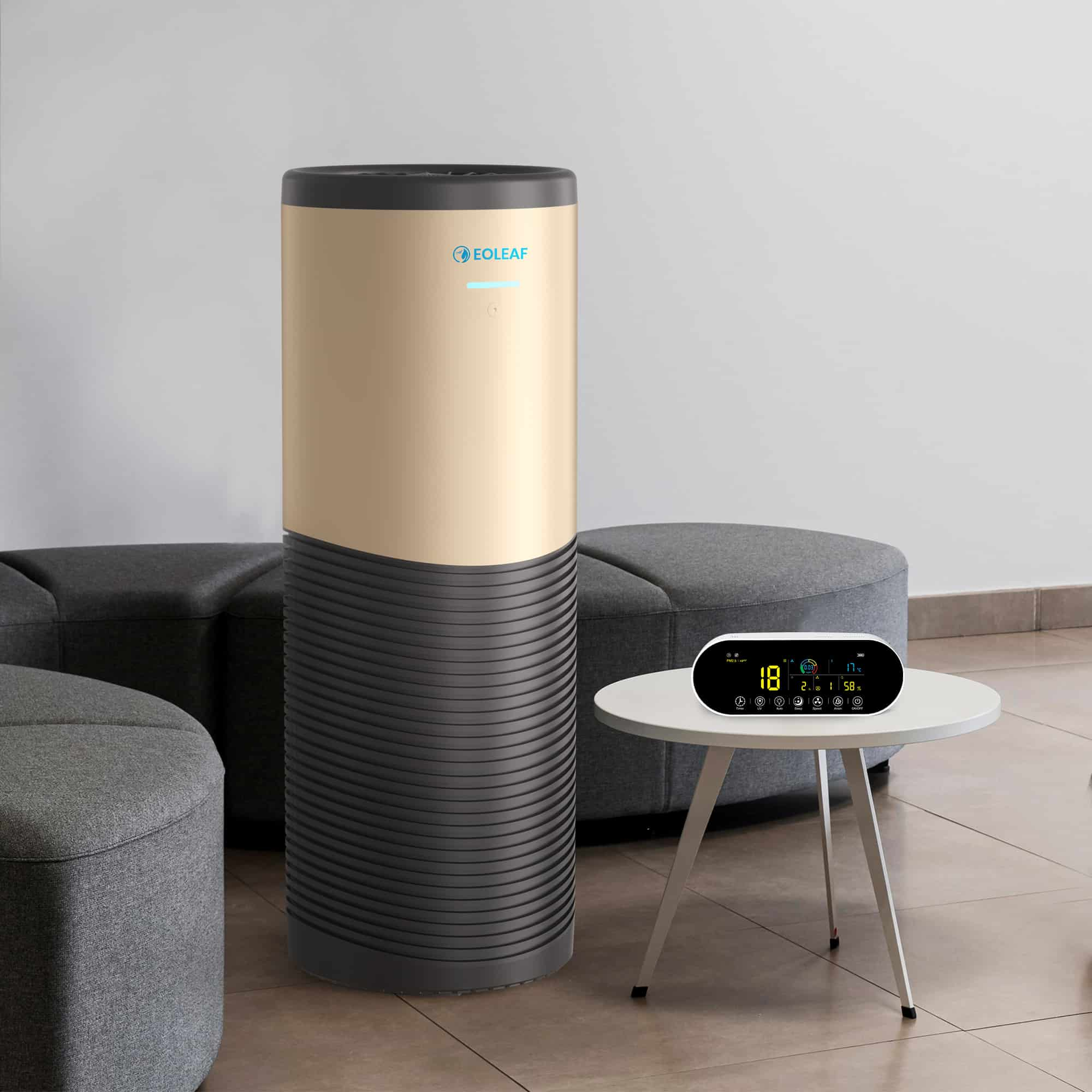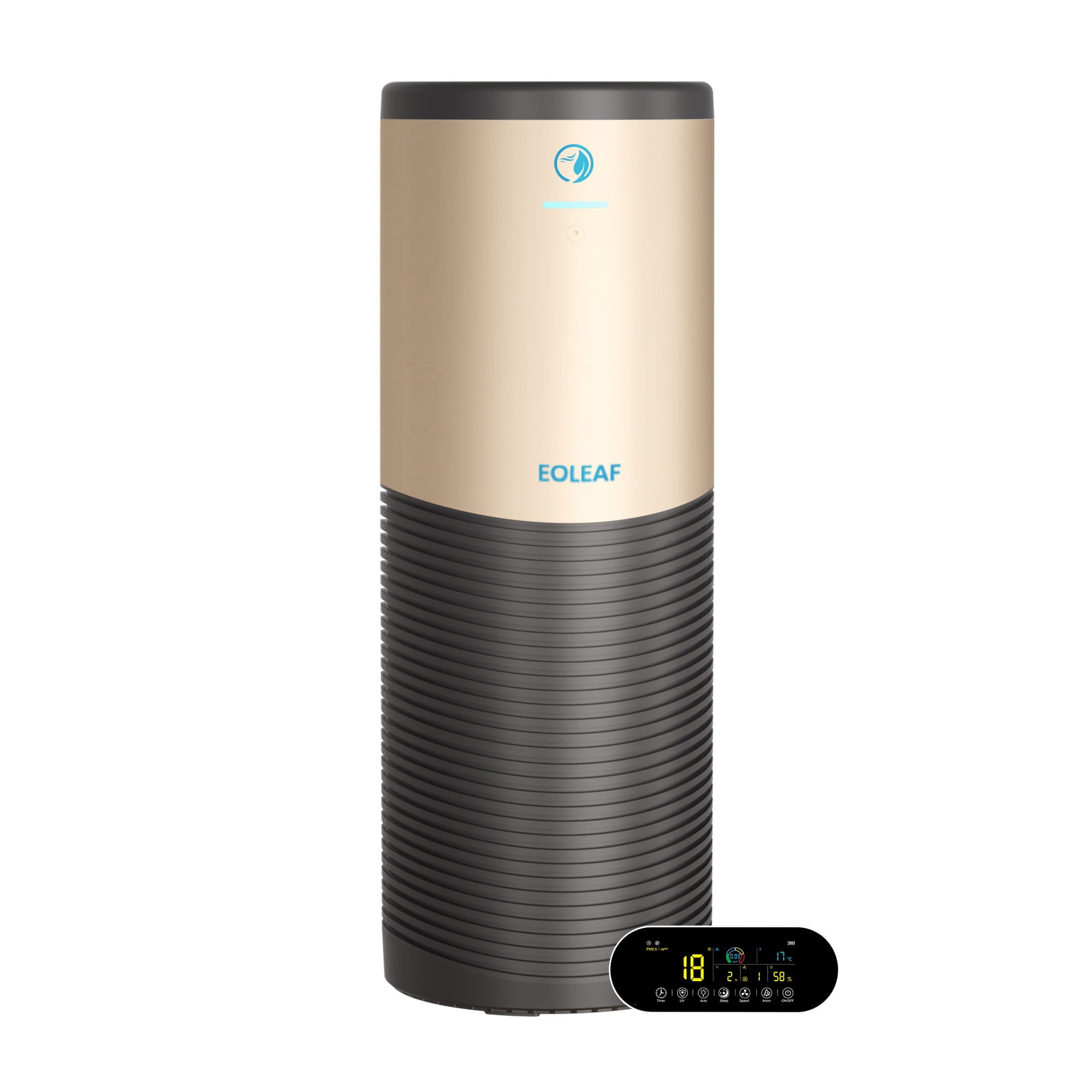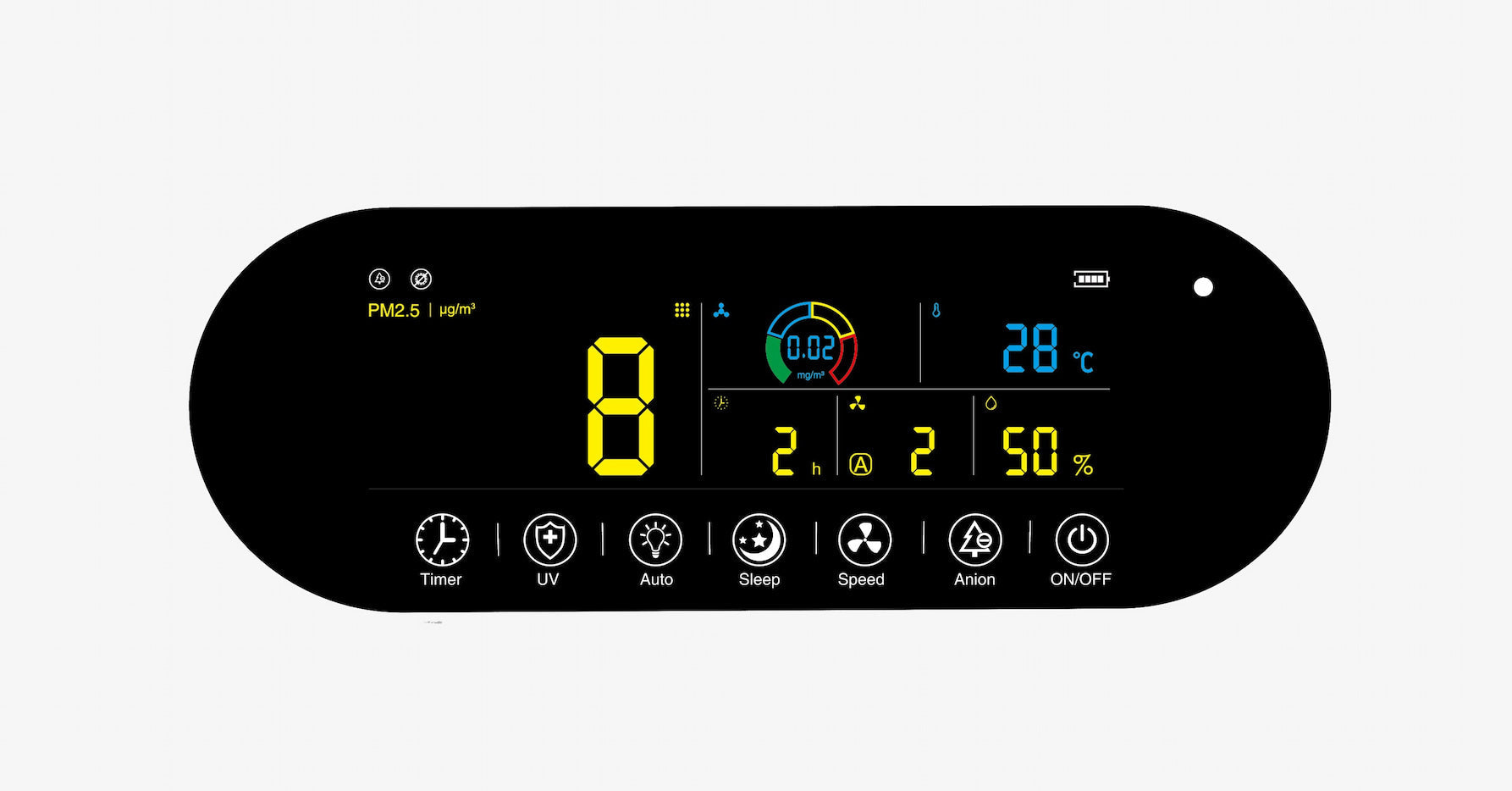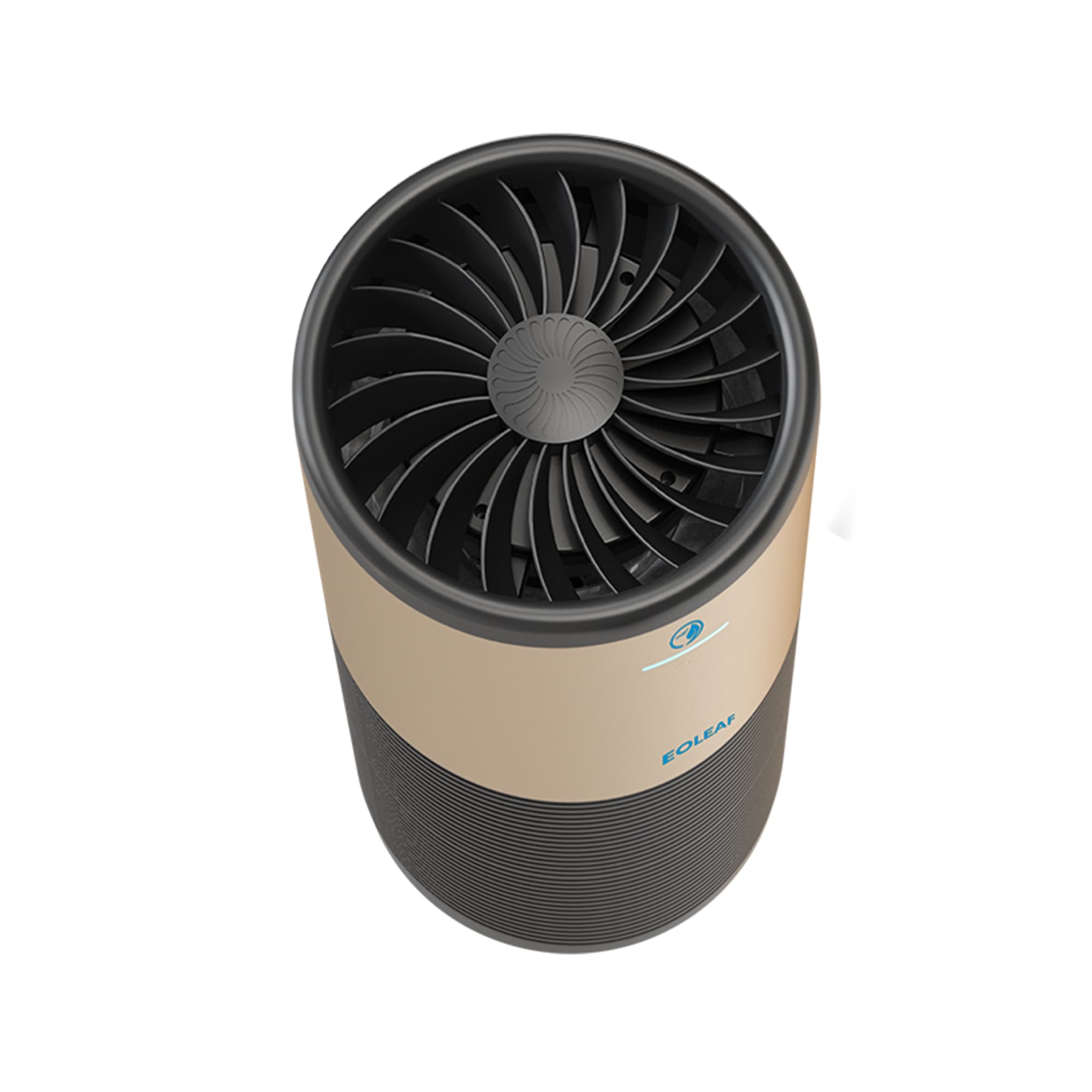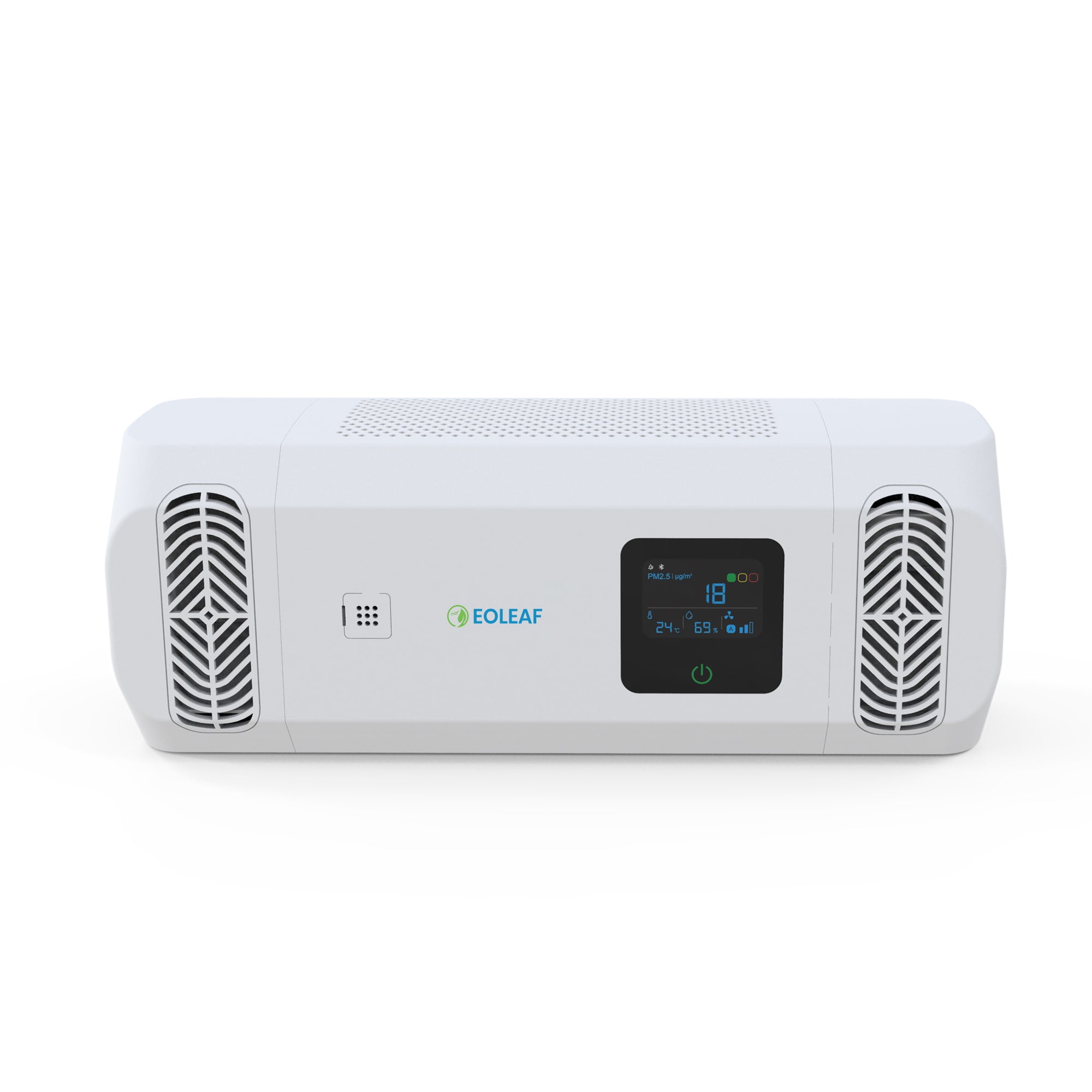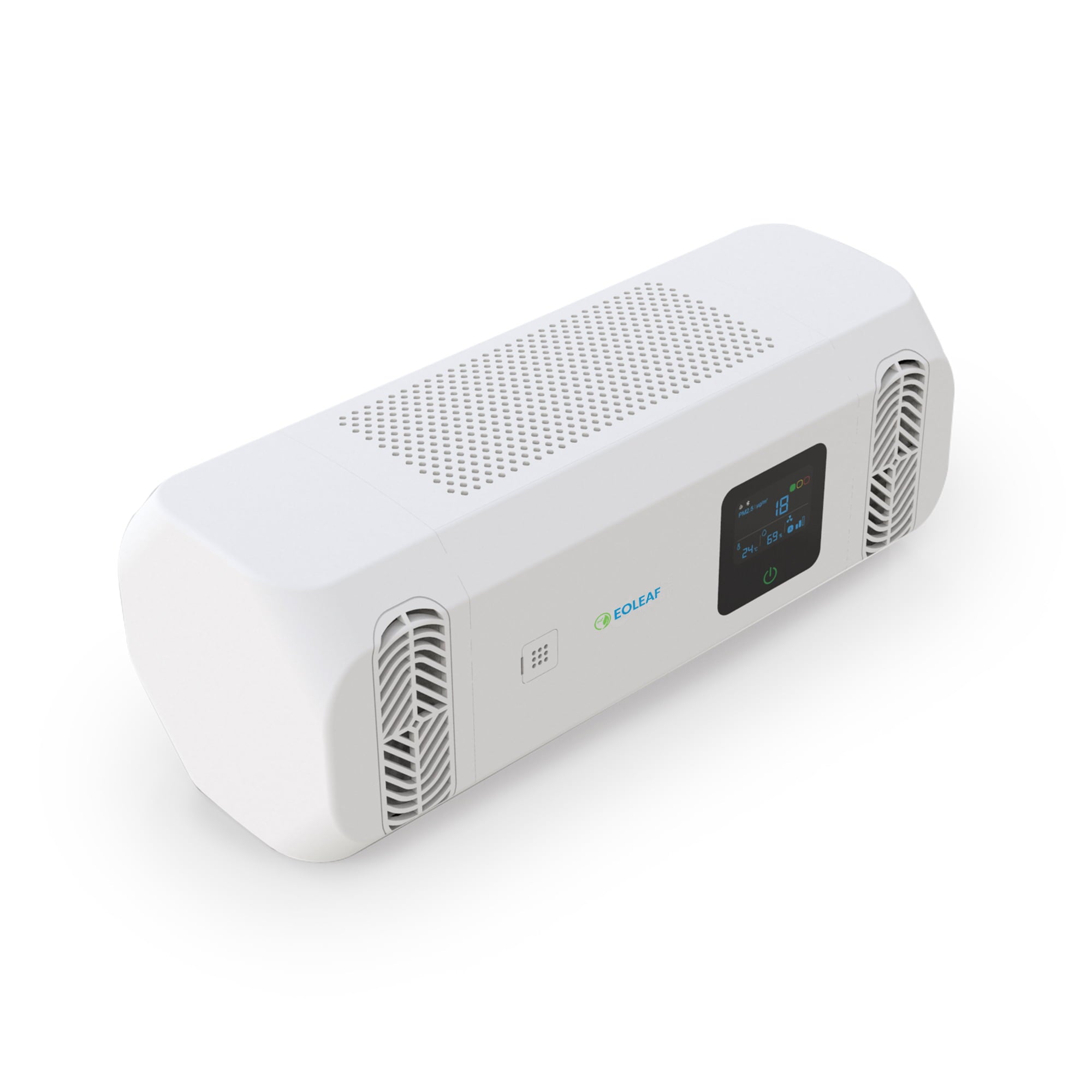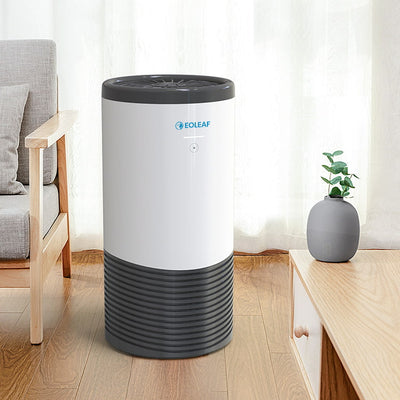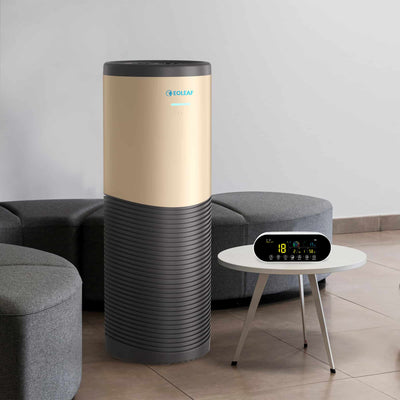Is a bigger air purifier better? A guide to air purifier sizing
When confronted with the immense variety of air purifiers on today’s market, purchasing one may feel like an overwhelming task. One of the most common questions amongst customers when sifting through offerings is, “How do I choose the right size air purifier for my space or room?” Is a bigger air purifier better? Read on to learn more.

Understanding air purifier size: does it really matter?
What defines an air purifier’s size?
When exploring air purifier options available on the market, you may come across words like “compact”, “medium”, “large”, and “industrial”, to name a few. How do you know which of these would best suit your needs?
Does air purifier size really matter? The answer to this question is an unequivocal “yes”, but perhaps not in the way you were thinking! Size absolutely does matter when it comes to choosing the right air purifier for your space or room size, but the size that matters is that of your space! It is essential that the purification power of the air purifier be adapted to the size of the space in which you plan to install it. Ultimately, when it comes to size, it is an air purifier’s filtration capacity that determines whether or not it will be sufficient for your space, not its physical dimensions.
Key performance factors beyond size
When determining an air purifier’s coverage area, there are three details that must be considered: 1) volume of your space, 2) CADR, and 3) ACH.
Calculating the volume of your space or room
In order to determine whether or not an air purifier will satisfy the needs of your space or room size, you must first calculate the volume of the space in which you plan to install it. To calculate volume, take the room’s length (in meters or sq. ft.) x the room’s width (in meters or sq. ft.) x the room’s height (in meters or sq. ft.). According to the example below, this would be 1 x 2 x 3. This will give you the volume of your room. If you have multiple rooms that you would like treated by an air purifier, repeat this for each room and add the volumes together to calculate the total volume.

Let’s imagine a real-life example. An individual has a neighbor who smokes cigarettes, and the smoke is entering her home. She wants to install an air purifier that will treat the air in the entirety of the first floor of her home to avoid inhaling second-hand cigarette smoke. The rooms on the first floor in her home are connected by open doors. The room dimensions are as follows:
- Living room: 5.6 m (18.4 ft) x 6.5 m (21.3 ft) = 36 m2 (392 sq. ft.)
- Office: 2.2 m (7.2 ft) x 2.4 m (7.9 ft) = 5.3 m2 (57 sq. ft.)
- Kitchen: 4.5 m (14.8 ft) x 3.8 m (12.5 ft) = 17.1 m2 (185 sq. ft.)
Next, she needs to calculate the total surface area of the space that she wants to treat:
36 m2 (392 sq. ft.) + 5.3 m2 (57 sq. ft.) + 17.1 m2 (185 sq. ft.) = 58 m2 (624 sq. ft.)
Nevertheless, it is not enough to calculate the surface area because an air purifier does not treat a two-dimensional space: it treats a space’s volume. This has a standard European ceiling height of 2.5 m (the US standard ceiling size is 8 ft). The volume of the space is calculated as follows:
58 m2 (624 sq. ft.) x 2.5 m (8 ft) = 145 m3 (5000 cubic ft)
Calculating your air purifier’s ideal CADR
Using the volume of your space or room, you can then calculate the desired CADR that your air purifier should have in order to efficiently filter all of the air in your space. Use the following calculations (follow the directions depending upon your unit of measurement):
In cubic meters per hour
Multiply the volume of your space by the Air Changes per Hour (or ACH, which refers to the amount of times that an air purifier completely replaces the air in your space or room). The recommended ACH in the air purification industry is between 3 and 5, meaning that the air is replaced at least three times per hour. An ACH of 3 is recommended for daily usage, whereas an ACH of 5 is recommended in high-risk germ propagation environments like medical or dental practices. Let’s use the minimum of 3.
145 m3 x 3 = 429 m3/h or , your desired air purifier’s minimum CADR to achieve an air replacement of 3 times per hour
In cubic feet per minute
To calculate an air purifier’s minimum CFM (cubic feet per minute) to achieve an ACH of 3 using imperial units of measurement, use the following formula:
Total room area (square feet) x ceiling height (feet) x ACH / 60(mins) = CFM
624 square feet x 8 feet x 3 / 60 = 252 CFM
After the above calculations, this customer will require an air purifier with a CADR of at least 429 m3/h or 252 CFM in order to achieve the minimum recommendations for air renewal. There are no minimum or maximum physical dimensions or measurements that a device should have.
It is worth noting that certain air purifier manufacturers, like Dyson, do not adhere to CADR standards and have instead created their own standard, making it difficult to select the right model or to compare efficiency between brands (read more below). Before making your purchase, it is essential to check the CADR data of the model you are interested in and, even better, to ask for the CADR level for each speed of the device. This will let you know exactly what type of efficiency your device will offer.

The science of air purification: how proper sizing affects performance
Coverage area and airflow mechanics: how air purifiers circulate and filter air in spaces and rooms of different sizes
Small spaces
Naturally, with smaller spaces or room sizes in homes or workplaces, filtering the air is an easier task than in larger spaces. Purified air mixing in a smaller space takes less time, and smaller spaces do not require air purifiers with as high of a CADR as larger spaces and room do. With air purification, the industry standard is to achieve an ACH (Air Changes per Hour) of 3 to 5, meaning that the air in the space is fully replaced three to five times per hour. Still, the higher the CADR the better, and proper placement should still be prioritised in order to encourage optimal air mixing and filtration.
Medium-sized spaces
The larger the size of a space or room in a home or workplace, the bigger the CADR needs to be. With medium-sized spaces, it is ideal to seek out an air purifier with a medium to high CADR in order to achieve an ACH of 3 to 5. Placement is also more important for medium-sized spaces than it is for small spaces to allow the air purifier to be able to achieve sufficient distribution and mixing of purified air.
Large spaces
Installing an air purifier for large spaces or room sizes in a home or workplace is a bit more complex, and the higher the CADR, the better, due to a greater volume of air to filter in larger spaces. Additionally, spaces above a certain volume may require more than one device. To provide an example, Eoleaf’s AltaPur 700 filters the air in spaces of up to 120 m2 - equivalent to 300 m3 (1300 sq. ft., equivalent to 10,600 cubic ft). For volumes of this size or smaller, one Eoleaf device will be sufficient and will be able to filter the entire space in all rooms. For larger volumes, multiple devices would likely be recommended, especially when taking space layout into account: are there multiple rooms to filter? Are these rooms separated by doors?
It is essential to take air purifier placement into consideration for large spaces. It is always recommended to place an air purifier in high-traffic areas and as close to potential pollution sources as possible, and this is particularly important in large spaces to encourage distribution of purified air. Air purifiers with strong fans are crucial for large spaces.
Another factor to consider is air outlet design. Many air purifiers offer horizontal air outlet, meaning that purified air travels in a horizontal fashion when released from the device. This is problematic for spaces and rooms of all sizes, but especially for large spaces and rooms, because when purified air is released horizontally, it makes it difficult to treat and mix the air located above the air purifier. This is why Eoleaf devices are all designed with a vertical air outlet.

Energy consumption and operating costs
In general, larger air purifiers do consume more energy than their smaller counterparts, usually due to the fact that they have larger, more powerful fans that allow them to filter the larger volume of air in large spaces or rooms. Generally speaking, air purifiers consume little amounts of energy, usually between 60 to 250 W, especially when compared to other domestic appliances like refrigerators and air conditioners (which consume anywhere from 100-800 W and 1200 W, respectively, on average).
Eoleaf devices are very energy efficient air purifiers with our largest and most powerful model, the AltaPur 700, only consuming 56.8 W when running on its fastest fan speed (speed 5). On average, Eoleaf devices consume only 15W on automatic mode.
Do larger air purifiers remove more pollutants?
Larger air purifiers can remove more pollutants, but it is not just size that matters. There are two factors that will contribute to how many and which types of pollutants an air purifier can remove: its filter(s) weight/size and filtration technologies used. Air purifiers with larger, heavier filters will be able to remove and store a higher quantity of pollutants than air purifiers with small, light filters. This is due to the fact that larger filters have a greater surface area to which pollutants can adhere. Air purifiers with more extensive filtration technologies (multi-layer filters) are also designed to combat more types of indoor air pollution and will do so more effectively.
Eoleaf’s air purifiers contain large, heavy filters that offer 8 steps of air filtration, for instance, providing the most thorough air purification on the market!

When should you choose a bigger air purifier?
Matching the air purifier to your space
The best course of action when choosing an air purifier for your space or room is to follow the air purifier manufacturer’s recommendations. However, it is essential to do your research because some manufacturers do not make certain information readily available or provide misleading information. Here is a short summary on our findings regarding coverage area of some of the most popular air purifier brands:
- Dyson does not adhere to CADR standards in determining air purifier efficiency. It has created its own standard, the ‘POLAR test’, which it states provides a more accurate representation of an air purifier’s filtration capacity. This is problematic because the user is unable to compare the efficiency of Dyson products with other brands, leading us to believe that the CADR of Dyson products is either low or entirely untested.
- Philips has misleading errors on its website that portray their products as more powerful than they are. For example, for the Philips 2000i air purifier series, Philips claims that it offers a CADR of 330 m3/h and covers a room size of up to 79m2. However, when reworking CADR calculations, it seems that this better represents room volume, not surface area. In reality, the coverage area for this device more accurately equates to less than half that size: 34 m2. Read more about our findings here.
- Levoit offers reasonable prices for seemingly very powerful devices. To provide an example, Levoit’s Core 600S boasts a 697 m3/h CADR for a device that only costs £299 (299€ in France and $299 in the USA). This filtration efficiency compares to our AltaPur 700, our largest and most powerful model. After doing some digging, we found that Levoit’s devices do not meet HEPA standards (despite the company having claimed that they do), leading Dyson to file an official complaint! Levoit then removed any mention of ‘certified-HEPA’ from their marketing. Without HEPA certification, efficiency has not been tested by a third-party and, therefore, cannot be confirmed. Read more here.
- Blueair provides another example of products that do not meet HEPA standards. Instead of being ‘HEPA-certified’, they have created their own technology: HEPASilent. Their technology combines ionisation technologies and HEPA-type technologies, but they are not certified, meaning that, like Dyson, their efficiency has not been tested by a third party and cannot be confirmed.
That said, when looking to see whether an air purifier is big enough to meet the needs of your space or room, confirm that: 1) it is HEPA-certified, 2) its coverage area is sufficient, and 3) it has a high CADR (the higher, the better!). We make all of this information readily available to our customers to help them make an informed, educated decision. Eoleaf devices (which are all medical-grade HEPA H13-certified!) along with their coverage areas and CADR are found below:
- NeoPur 400: ideal for smaller spaces with a CADR of 420 m3/h, covers spaces of up to 40 m2 (450 sq. ft.)
- TeraPur 600: ideal for medium-sized spaces with a CADR of 570 m3/h, covers spaces of up to 80 m2 (850 sq. ft.)
- AltaPur 700: ideal for large spaces with a CADR of 670 m3/h, covers spaces of up to 120 m2 (1300 sq. ft.)

Special use cases for large air purifiers
Are there situations where you should ‘size-up’ an air purifier, or get an air purifier that is bigger than your needs require? In short: no. Purchasing an air purifier that is too large for your space is simply a waste of energy. Nevertheless, there are some situations where it may be ideal to replace your filter more often, including:
- Healthcare environments with heavy germ exposure (like hospitals and dentists’ offices)
- Environments with atypically high levels of fine particle or chemical pollution (industrial settings, beauty salons, and pet grooming salons, to name a few)
Limitations and drawbacks of bigger air purifiers
Space and aesthetic considerations
Requiring a bigger air purifier may pose some challenges for the consumer. Many air purifiers designed for large spaces are bulky, taking up lots of precious space. For larger units, it may be hard to find a place to put it where it will not get in the way! When choosing an air purifier for larger spaces, choose one that is as compact as possible. Eoleaf’s AltaPur 700 is taller than it is wide (it is 33 in. tall and only 12 in. in diameter, or 84 cm tall and 31 cm in diameter), meaning that it takes up less surface area than other devices. It is still incredibly powerful with a CADR of 670 m3/h, and it has a sleek design, too!
Cost vs. performance: are they worth it?
Investing in an air purifier has two cost considerations to keep in mind: 1) the initial investment (the price of the unit), or the price of the unit and 2) maintenance costs.
Air purifier pricing varies significantly, but so does quality. If you are looking for a device that will provide the best quality air filtration, seek out one that offers multiple air filtration technologies. The more technologies an air purifier contains, the more types of air pollutants it will be able to filter. Eoleaf devices, for example, offer 8 different air filtration technologies as part of its 8-step multi-layer filter! This provides some of the most comprehensive air filtration on the market, effectively combatting all types of indoor air pollution (including particles down to a size of 0.01 microns).
Maintenance costs are part of owning an air purifier regardless of the brand. All air purifiers require filter changes, but the frequency of which this must be performed may vary, as does pricing. Eoleaf products use high-quality filters that require replacing only once per year, whereas other brands may require replacing every few months. The better the quality of the filter, the less often it needs changing!
Noise levels and usability
Air purifiers that are designed to be powerful yet quiet (low noise) are ideal when choosing an air purifier for spaces of all sizes. However, this is particularly important for large spaces. Air purifiers that are destined for large spaces may produce significant amounts of noise, so be sure to check an air purifier’s technical specifications before making your purchase. Eoleaf’s AltaPur 700, for instance, does not exceed 60 dB, even when running at its fastest fan speed (speed 5)!
Look to Eoleaf for thorough air filtration for spaces of all sizes
Here at Eoleaf, there is an air purifier for spaces of any and all-sized spaces. If you live in a small flat, our NeoPur 400 is perfect for your needs. If you need to filter all the air in your large space, our AltaPur 700 would fit the bill. The best part is that all of our devices are equipped with our 8-step air purification technology, ensuring the removal of all types of indoor air pollution: fine particle pollution, chemical pollution, and biological pollution. Breathe the cleanest indoor air available with an Eoleaf air purifier.

Eoleaf's range of air purifiers
NeoPur 400 air purifier
40 m² (450 sq ft) coverage area - Smart & Connected
TeraPur 600 air purifier
80 m² (850 sq ft) coverage area - Ultimate all-in-one
AltaPur 700 air purifier
120 m² (1300 sq ft) coverage area - Professional model
PurCar air purifier
HEPA H13 Filter & Ioniser - For all vehicles

